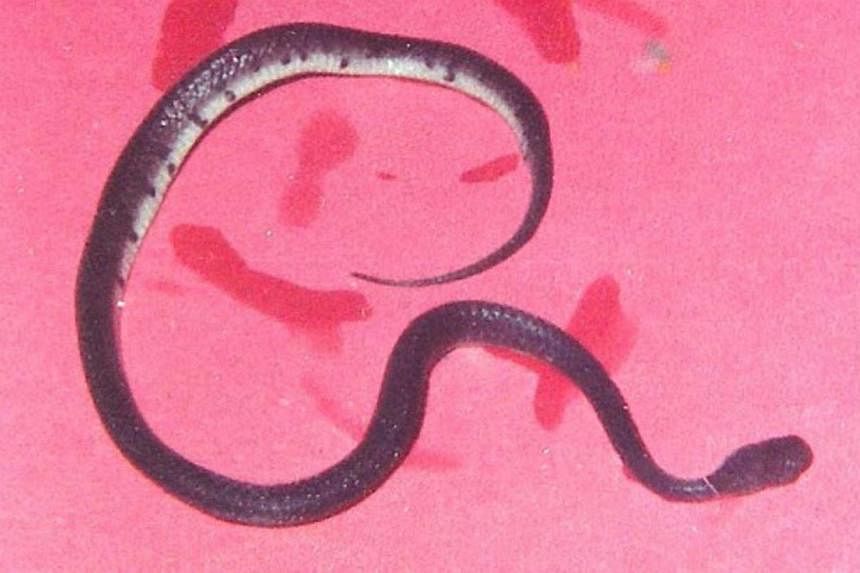Two species of snakes new to Singapore have been identified by researchers - an indication that the country's nature areas are still thriving habitats for biodiversity despite their fragmentation.
The non-poisonous reptiles, a blackwater mud snake and a smooth slug snake, were identified by researchers in September.
The 40cm-long, two-toned blackwater mud snake - a largely black creature with a brownish- yellow underbelly - was discovered on Sept 12 by staff from the National Parks Board's (NParks') National Biodiversity Centre in the Nee Soon Swamp Forest during a biodiversity study.
The Nee Soon Swamp Forest is located within the Central Catchment Nature Reserve.
"Though decades of work on the fauna of Singapore have been carried out, it is remarkable that the blackwater mud snake has remained undiscovered until now," said covering director of the biodiversity centre Geoffrey Davison.
He said because the record was new, "very little is known about its population size" in Singapore, although its known habitat is within the Central Catchment Nature Reserve.
On the International Union for Conservation of Nature (IUCN) Red List of Threatened Species, the blackwater mud snake is listed as a data deficient species, with the available information collected from only 10 specimens.
Said National University of Singapore (NUS) biologist Rudolf Meier, who led the team that sequenced the genetic data confirming the species identity of the snakes: "South-east Asia is home to a very large number of species (which) we only have rudimentary knowledge of... The blackwater mud snake is one such case.
"It is gratifying that we now know the species also occurs in Singapore, although the country has only very little suitable habitat for this species."
The other discovery - a smooth slug snake - was found as roadkill in Old Upper Thomson Road by a member of the Nature Society (Singapore).
"The slug snake had previously been spotted in the vicinity of the zoo in Mandai in 1978, but it was unclear whether it was native," said Professor Meier.
Such doubts, however, have been cleared, based on the genetic material from the carcass.
The slug snake is listed as a species of least concern on the IUCN Red List, which means it is not under threat. Like the mud snake, the slug snake can be found in peat swamps and black water environments within South-east Asia, said Dr Davison.
The 750ha Nee Soon Swamp Forest is Singapore's last remaining primary freshwater swamp forest. Before the early 1930s, such habitats could also be found in Upper and Lower Seletar and Jurong. These areas have been converted for other land uses.
The Nee Soon site is the focus of an ongoing NParks-led study of its biodiversity and water systems which aims to help the authorities develop "long-term sustainable management practices for the area".
NParks is working with the NUS Tropical Marine Science Institute, Department of Biological Sciences, Department of Geography and the Lee Kong Chian Natural History Museum on the study, which started early last year and is expected to wrap up next year.
To date, quantitative sampling for fish, shrimps, crabs and other invertebrates has been conducted, said Dr Davison.
A number of animal and plant species on the IUCN Red List have been found to inhabit this area, including two freshwater crabs found nowhere else in the world - the Johnson's Freshwater Crab and the Swamp Forest Crab.



